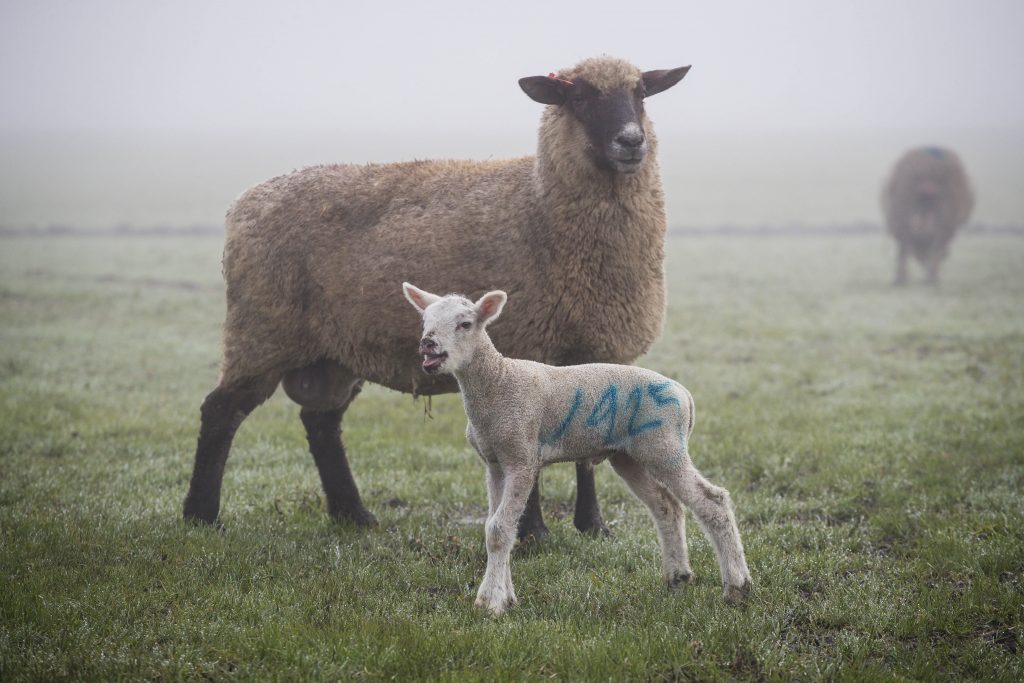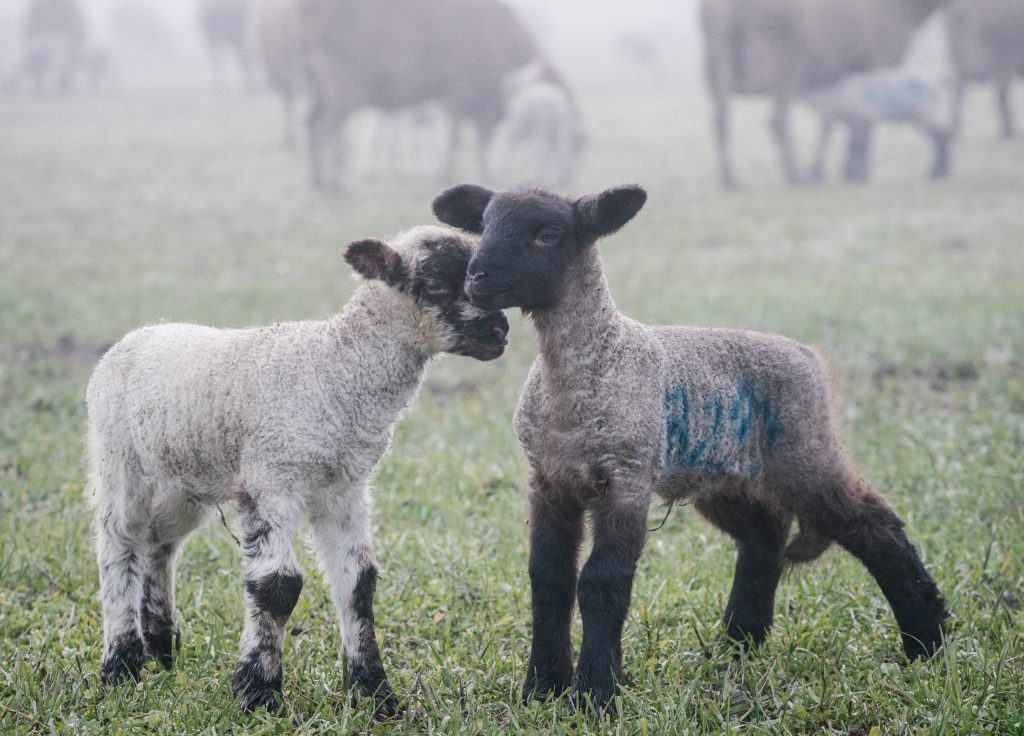Urban Farmer's Almanac - Lambing
January 6, 2017Why Farmers Mark Lambs and other Mysteries
There are a lot of mysteries in this universe, but few puzzle suburban dwellers more than various colored splotches and numbers miraculously appearing on a flock of sheep and new lambs. We decided to get to the wool of the situation and ask someone who knows a thing or two about lambing.
Meet Emily Ruckert, an Oregon State University graduate with a degree in animal science who grew up in Albany and lives less than a mile from her family’s clover, grass seed, and sheep farm. Emily has been working here since she can remember, and raised sheep since she was 14. With 15 years on the job and a current herd of 450 sheep, she’s known in these parts as a lambing expert.
What is Lambing?
Lambing is a term used to describe the birthing and raising of sheep. While most deliveries are uneventful and go as planned, it sometimes becomes necessary to help ewes (moms) give birth to larger lambs or lambs that are not in the right position to be born.
“In nature, lambs are born in the spring, but we do it in the winter,” Emily said when asked about the best time of year for lambs to be born. “By summer all the babies are gone and we can breed again in July.”
What’s Up with the Spray Paint?

The answer is pretty simple, really. Each ewe is given a number. This number is on their ear tag. Babies are too little for an ear tag, so they get the number sprayed on their body. The colors correspond to the number of lambs in the litter. At the Ruckert family farm, red equals one lamb, blue means two lambs, and three lambs receive green numbers.
“The colored numbers make it easy to match mom with her babies,” Emily happily explained. “We mark the mom too with a splotch on her hind quarters.”
While most sheep don’t have more than three lambs, if four are born to a single ewe, Emily and her employees find a surrogate mom to take the extra lamb.
Keeping Lambs Warm and Happy
Right before lambs are born, Emily works at getting the expectant ewes into the barn for protection from predators and the elements.
“Lambs are born wet, so if you don’t get them inside they don’t have much of a chance,” Emily stated. “I don’t sleep very much when lambing. We check on them around the clock,” she said with the smile of a proud and dedicated country girl. “I’m thankful for our two employees Ruben and Samuel, who take care of the rest of the farm so that I can concentrate on the lambs.”
A few days after birth, the lambs are moved to community pens where mom can teach them how to be sheep. If the ewe is having issues, they are moved to a smaller, more intimate pen where they have an easier time keeping track of their lambs.
“This is when we cut off their tails,” she said. “As sheep get older, tails just get in the way, cause worming issues, infections, and parasites.”
Do Eagles Really Take Lambs?
Emily, similar to other sheep owners, likes to avoid what she terms eagle bait. “Eagles will swoop in and take a lamb when they are first born.” But Emily clarified that there are plenty of ways to protect lambs and raise them.
“This is one of the few livestock where you can make your money back quickly. It’s also very rewarding.”
Get what Ewe Need at Coastal
You’ll find everything for your lambs, sheep, and rams at Coastal Farm & Ranch, including feed, fencing, and advice. Just stop by your nearby store and ask a few questions. We’ll point you in the right direction.
Quick Lambing Facts
- Lambs can often stand and nurse within 30 minutes of birth.
- Ewes will eat the placenta to hide evidence of the new lamb from predators. Most experts say it is best to take the placenta away and destroy it before that can happen.
- While newborn lambs weight up to 12 pounds, a 10-pound eagle can easily fly away with one.
You can follow Emily and her many adventures in Lambing this season on Instagram @Emily_Ruckert.

